3 min read
What’s #Trending in Branch Banking?
Note: The focus of this article is on current trends in branch banking. This article features information and findings from an interview with subject...
3 min read
 Kathryn Mahr Dollar
|
November 12, 2025
Kathryn Mahr Dollar
|
November 12, 2025
.jpg)
Before we get into the nitty-gritty of planning your digital paid media campaign for next year, take a moment to reflect: Where does your financial institution stand in its digital paid media journey? (No judgment here, every great brand starts somewhere!)
No matter where you are, success starts with a solid plan and clear goals. Let’s break it down into four simple steps to achieve your 2026 objectives.
Step 1: Assess Your Goals and Responsibilities
What are you trying to achieve?
Your goals might be broad, like “growing our retail deposits,” or specific, measurable, and time-bound, such as “closing 100 mortgage loans in Q1 of 2026.” Whatever they are, lay them out clearly and identify the tools and resources needed to achieve them.
Consider how digital paid media, a powerful tool to reach people at every stage of their customer journey, fits into this strategy.
Once your goals are defined, it’s time to develop a smart strategy that aligns with your budget and delivers results.
Step 2: Blend Where You Are with What You Do

Let’s talk strategy.
For Beginners: If you’re just starting to build your digital paid presence, begin with an “Always On” campaign. Focus on boosting your visibility, expanding your reach, and gathering valuable audience insights.
Your campaign can focus on personal or business audiences, but the goal here is simple – build brand awareness and earn top-of-mind recognition with your audience.
These campaigns are important, no matter where you are in your digital paid journey. The focus is typically on higher-funnel tactics, such as Display and Streaming TV or Audio, to help create a strong foundation of brand awareness.
For the Pros: If your brand is already rocking the digital space with an Always On campaign, it’s time to sharpen your focus on specific areas (e.g., deposits, mortgages, business offerings, etc.). Here, we suggest running campaigns that are product-focused based on seasonality throughout the year.
These initiatives are more conversion-focused, using lower-funnel tactics like Search Engine Marketing (SEM) and Google Performance Max, or as we call it, Spark.
You might be saying to yourself, “This is all great, but why do I have to run SEM and Spark? Can’t I just run Display and be done?”
The answer is yes, but you likely won’t see the results you were aiming for when you set your goals. The most important part of a digital paid media strategy is selecting tactics that cover the entire funnel.
Spark is a power-house tactic that supplements your campaign by combining Display, Video, and YouTube ads to build brand awareness and gather valuable audience data. This data is then used to create custom ads across the Google Platform. It even shares its audience data with your SEM, Display, and STV tactics, strengthening performance over time.

SEM is a crucial part of any campaign as it grabs people when they are at their highest intent and looking to convert. There’s been a lot of buzz about the changing search engines and what it means for digital paid media. Honestly, it doesn’t mean a lot, yet.
SEM remains the best tactic to convert your high-intent users. Despite AI engines providing zero-click results, these pulls are geared more toward informational results, not for people looking to convert.
Also, know that an increasing number of people use social media to search. That doesn’t detract from the significance of SEM — rather, it amplifies the importance of a well-rounded campaign that’s also present on social.
For Everyone: No matter the campaign type, filling the funnel with leads is crucial. Lower-funnel tactics generally don’t drive leads as effectively. That’s where programmatic audio, Streaming TV (STV), and Spark come in. These tactics build awareness and brand recognition, so when your audience is ready to search and potentially convert, your brand is the first thing they think of.
Step 3: Leverage Social Media in the Middle
Once people know who you are and what you offer, it’s time to meet them in the middle – the middle of the funnel, that is. Social media is a great way to continue building trust with your audience while keeping your brand top of mind.
Social media tactics can also be conversion-focused, depending on how you structure them. Use your goals to guide your approach. At Mills, we use SEM, Spark, and a number of social media tactics to pull digital paid media conversions.
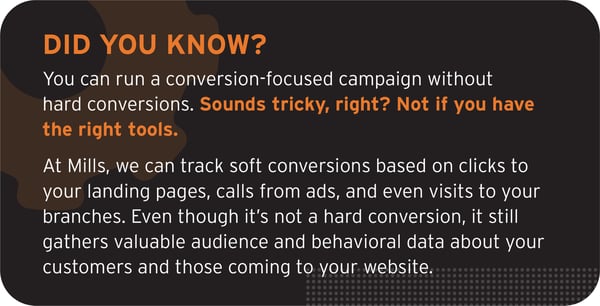
Step 4: Put it all Together
With your goals defined and campaign tactics selected, the next step is arguably the most important part and can make or break your whole campaign – developing your messaging.
When creating your messaging, consider where your audience is in the journey. Are they familiar with your brand and products? Or are they completely unaware and just starting their research journey?
Top-of-funnel messaging will differ from bottom-of-the-funnel messaging, and your landing page content should differ again. The goal is to guide your customers down the funnel with a cohesive voice, look, and feel that evolves throughout their journey.
Don’t forget to incorporate traditional tactics, like billboards, radio ads, and direct mailers into your messaging strategy.
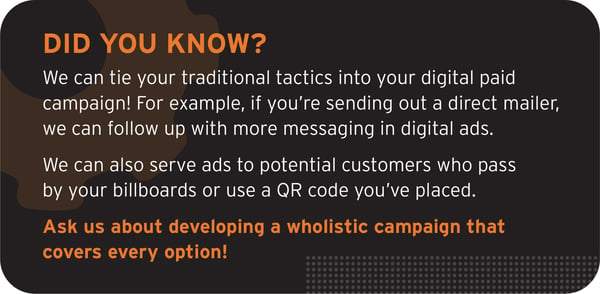
Ready to take your 2026 digital paid media strategy to the next level?
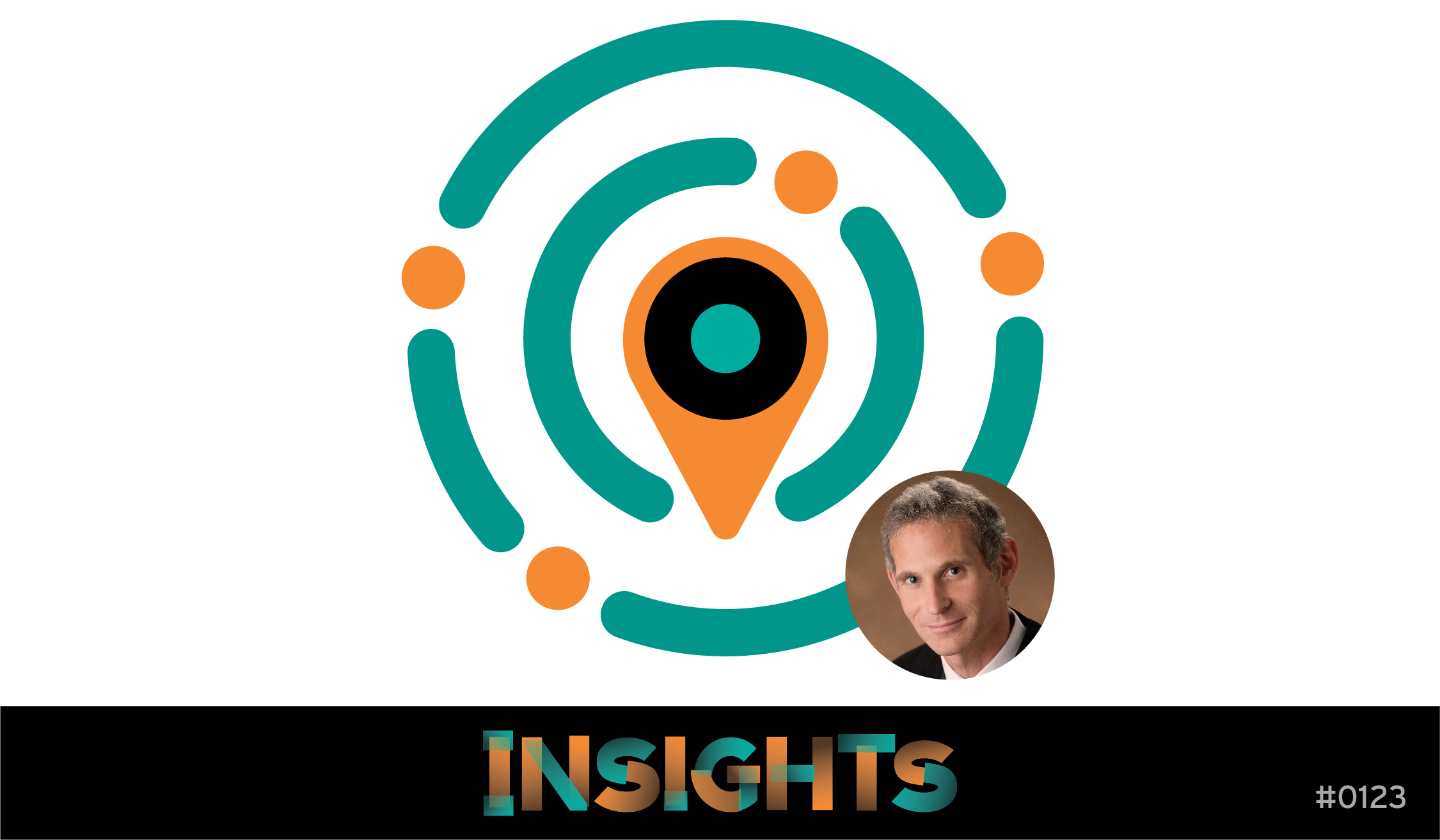
3 min read
Note: The focus of this article is on current trends in branch banking. This article features information and findings from an interview with subject...
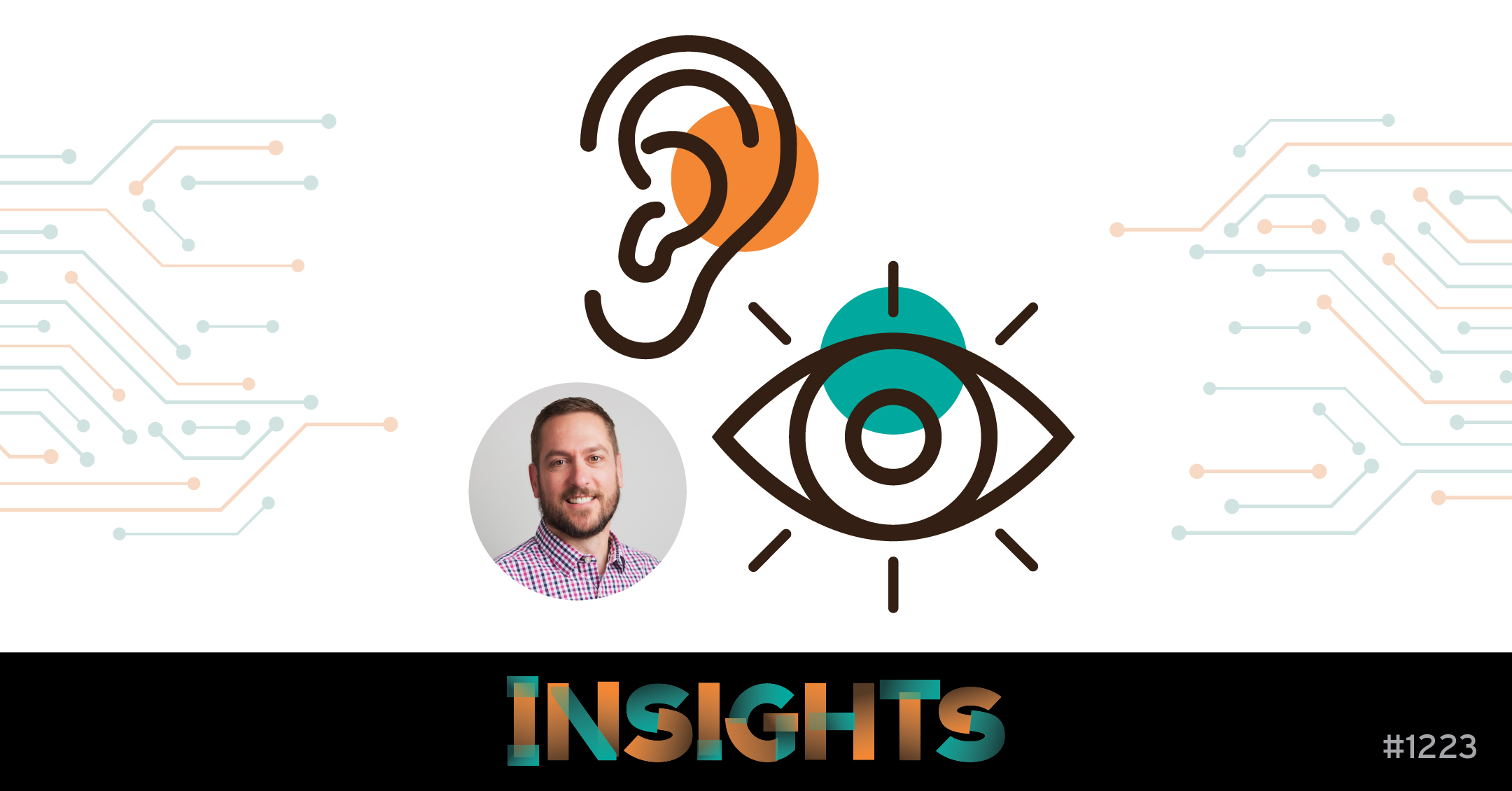
3 min read
Connect with consumers in new ways with these generative AI audio and visual tools. "To me, the future is that we are all using these tools, and...
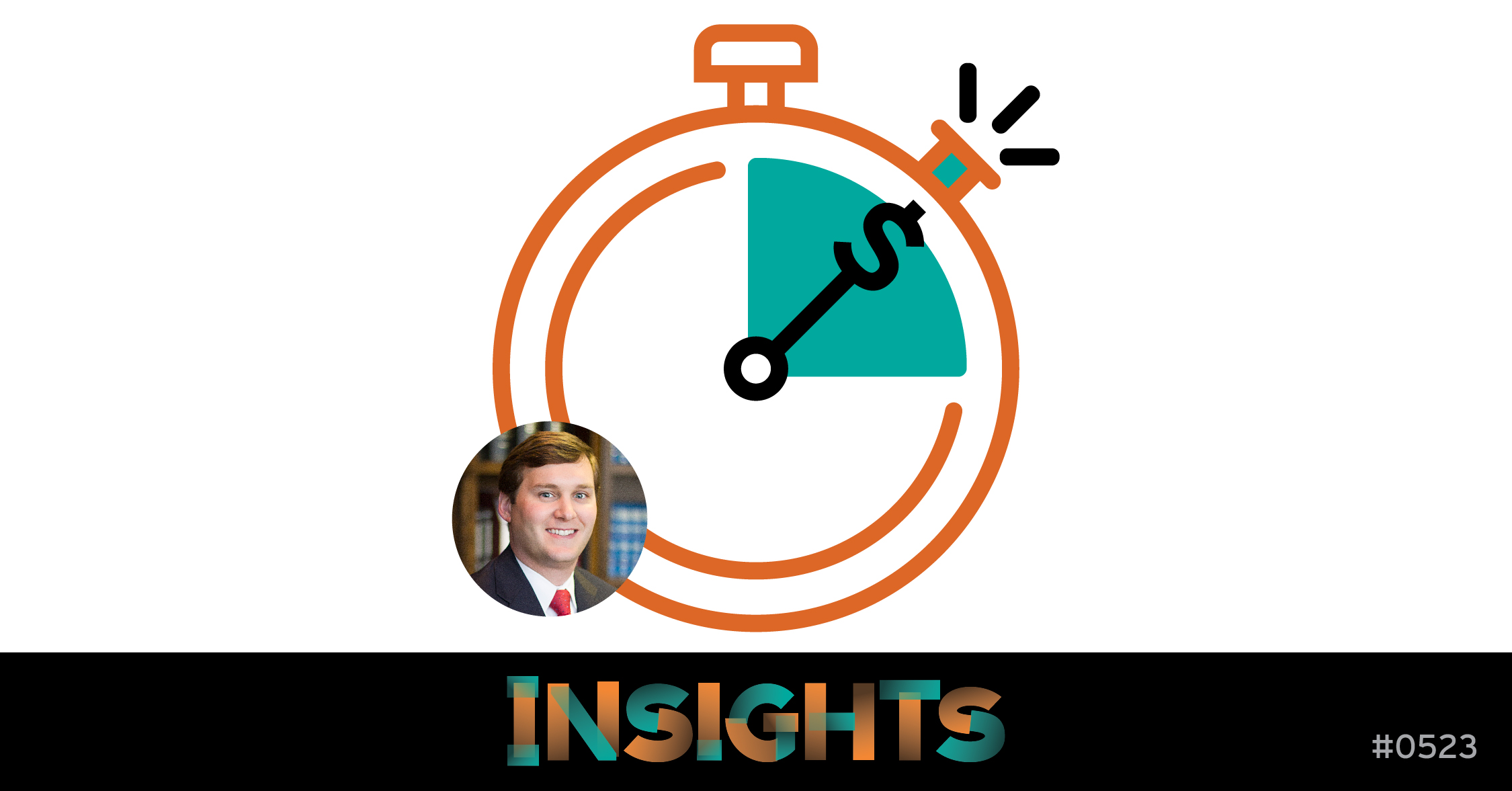
4 min read
Note: The focus of this article is on the current state of the banking industry and how today’s economic environment has impacted strategic planning...